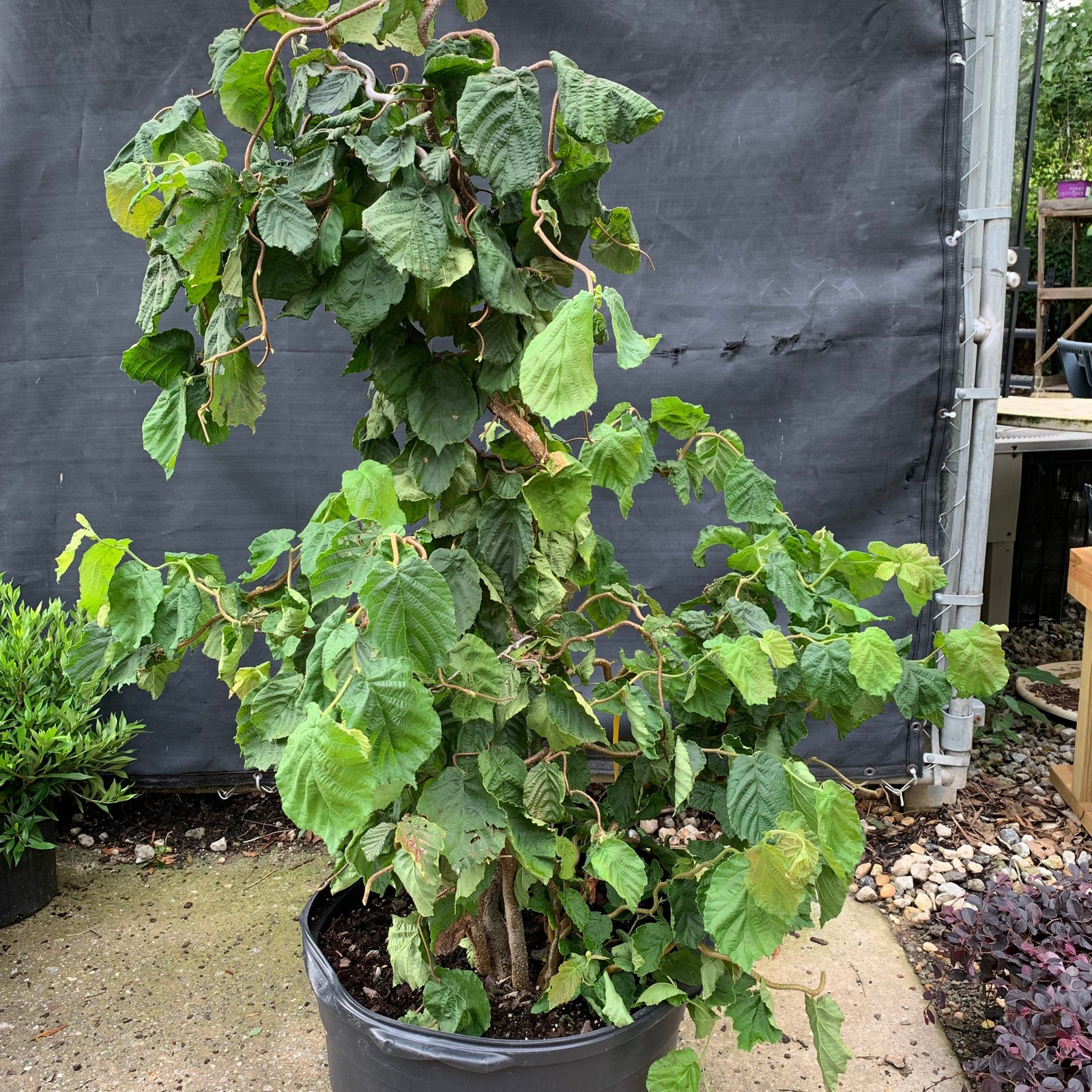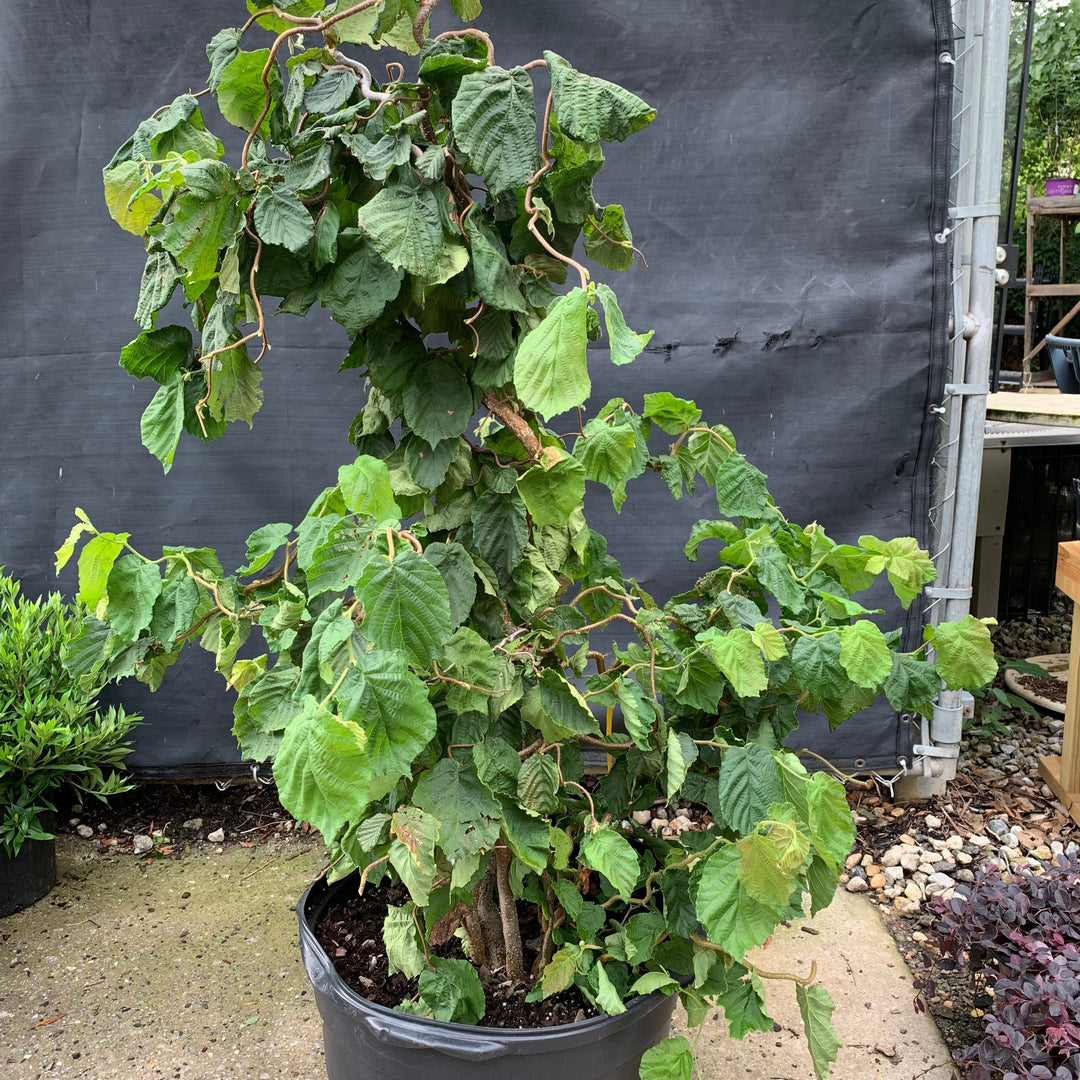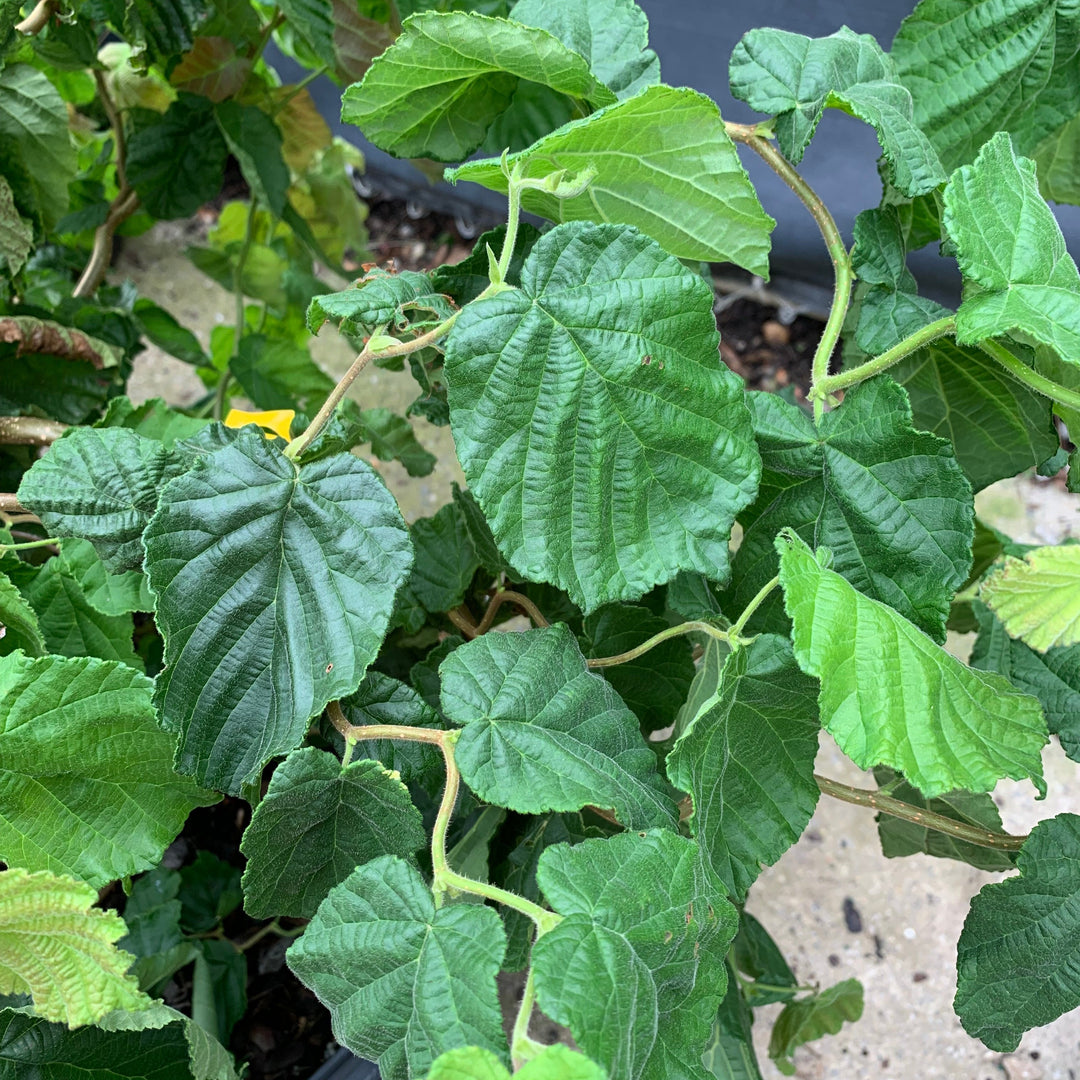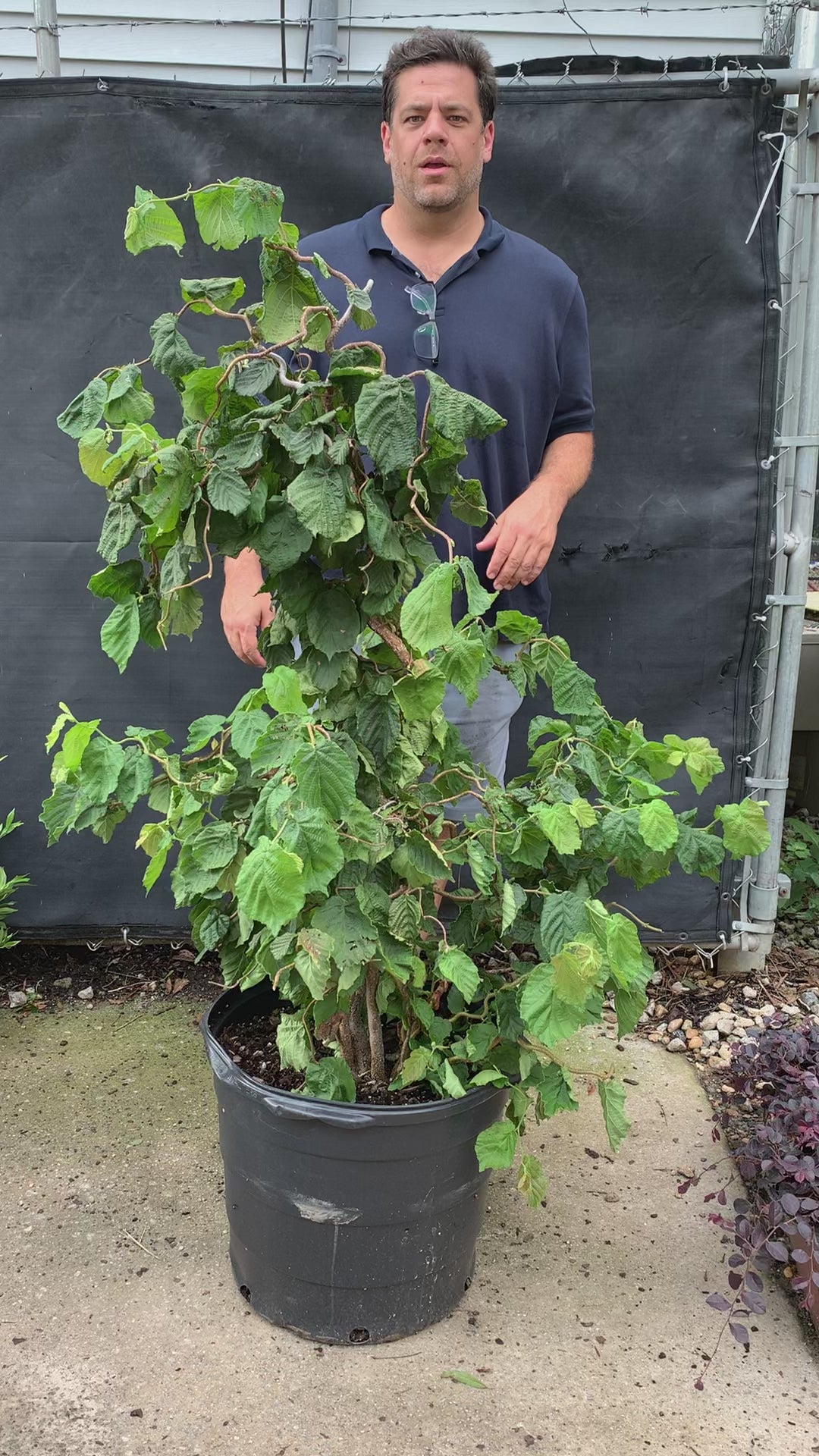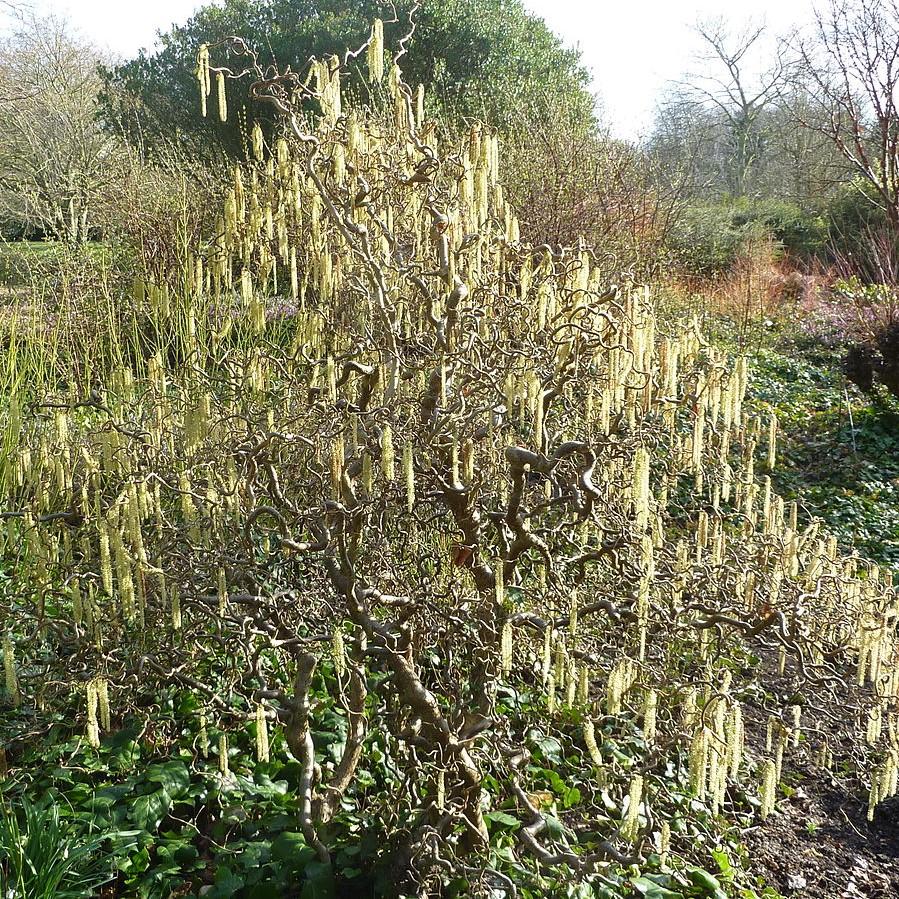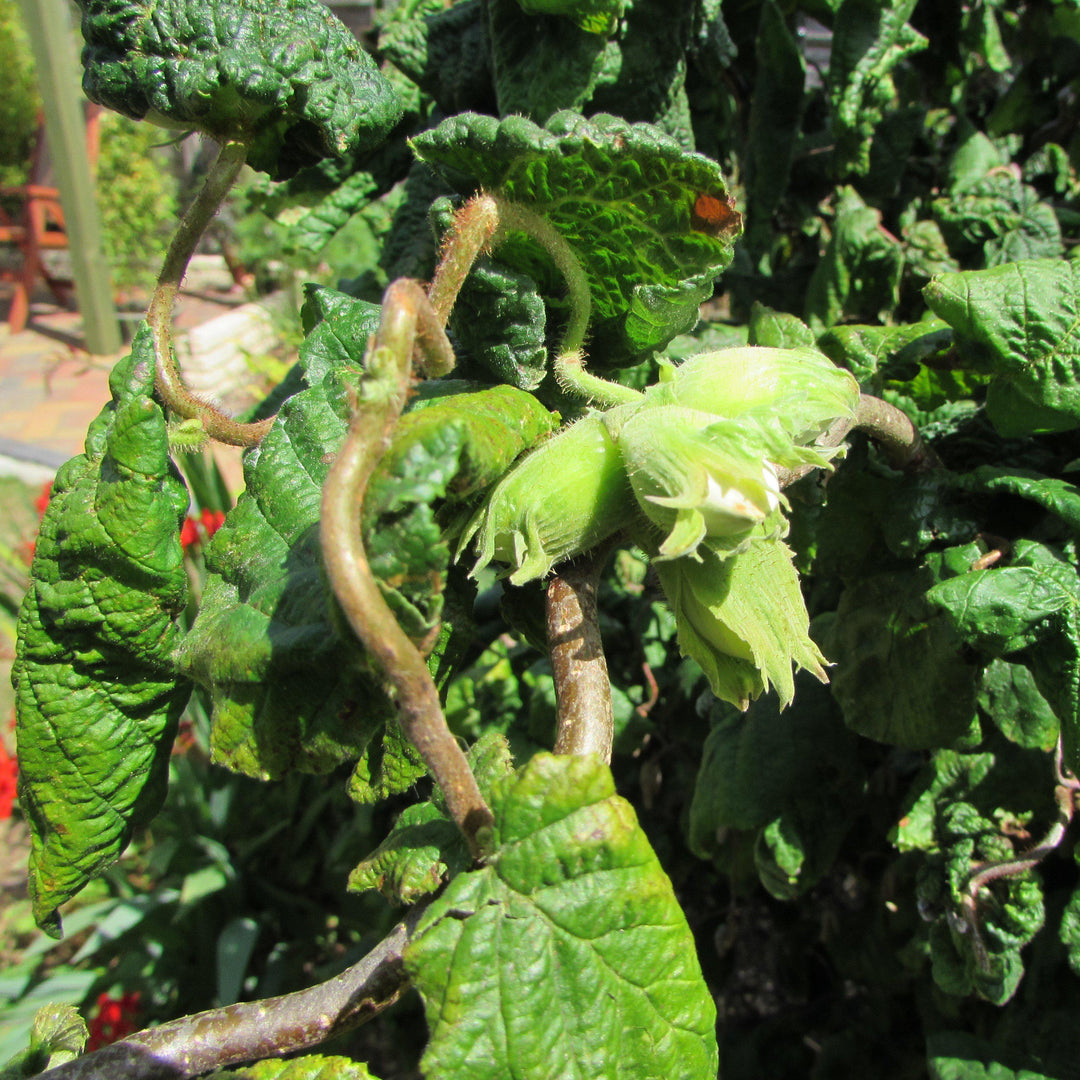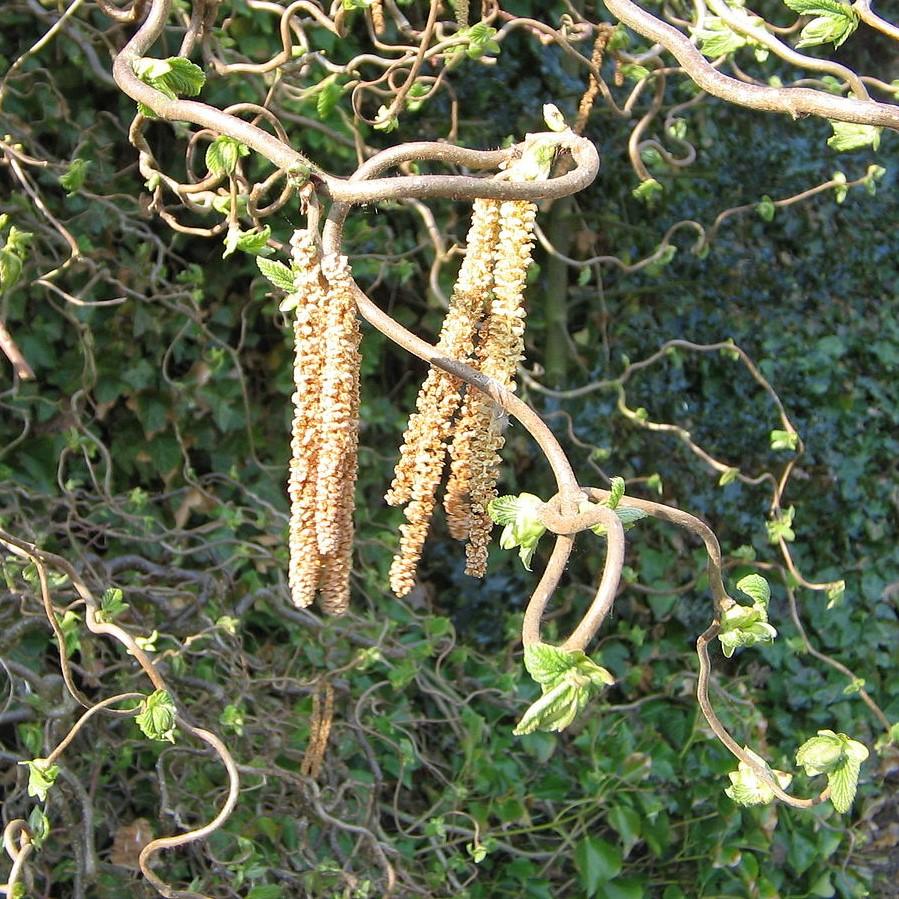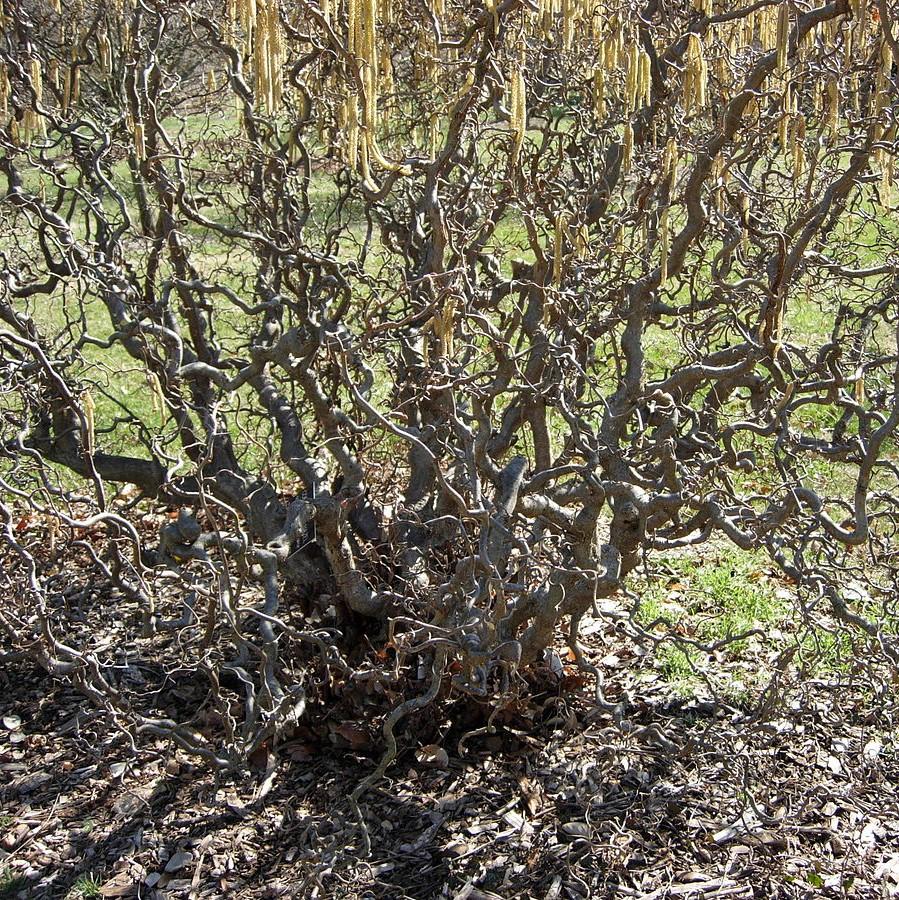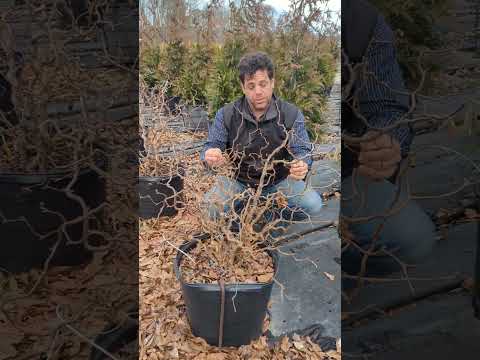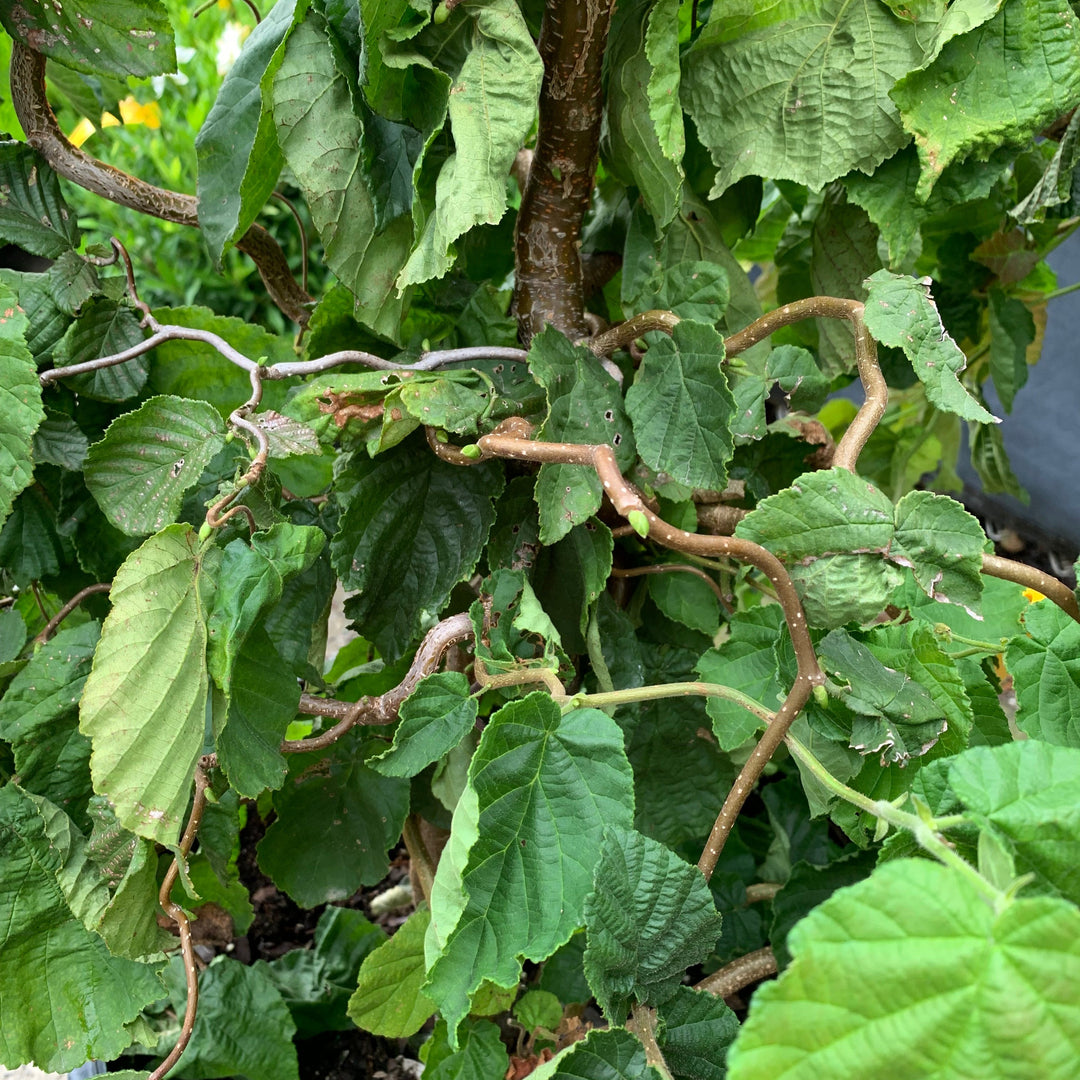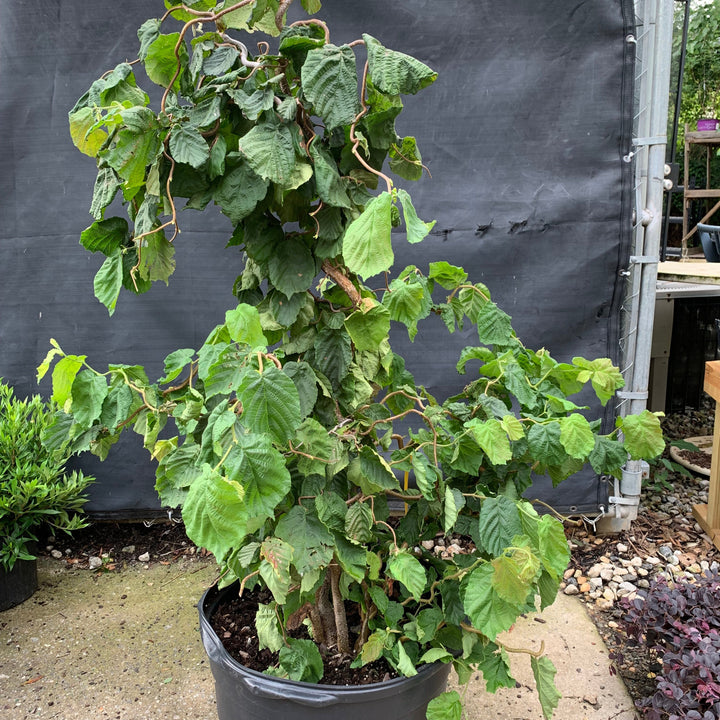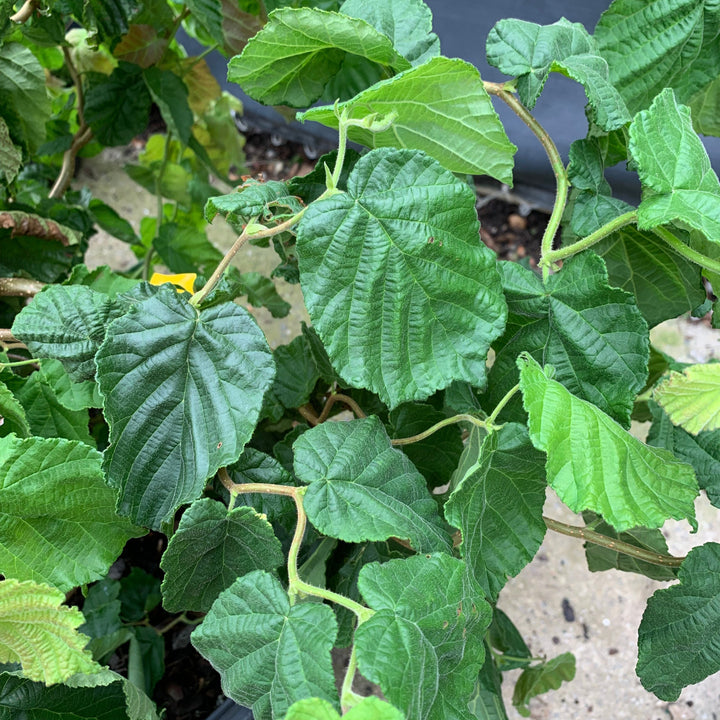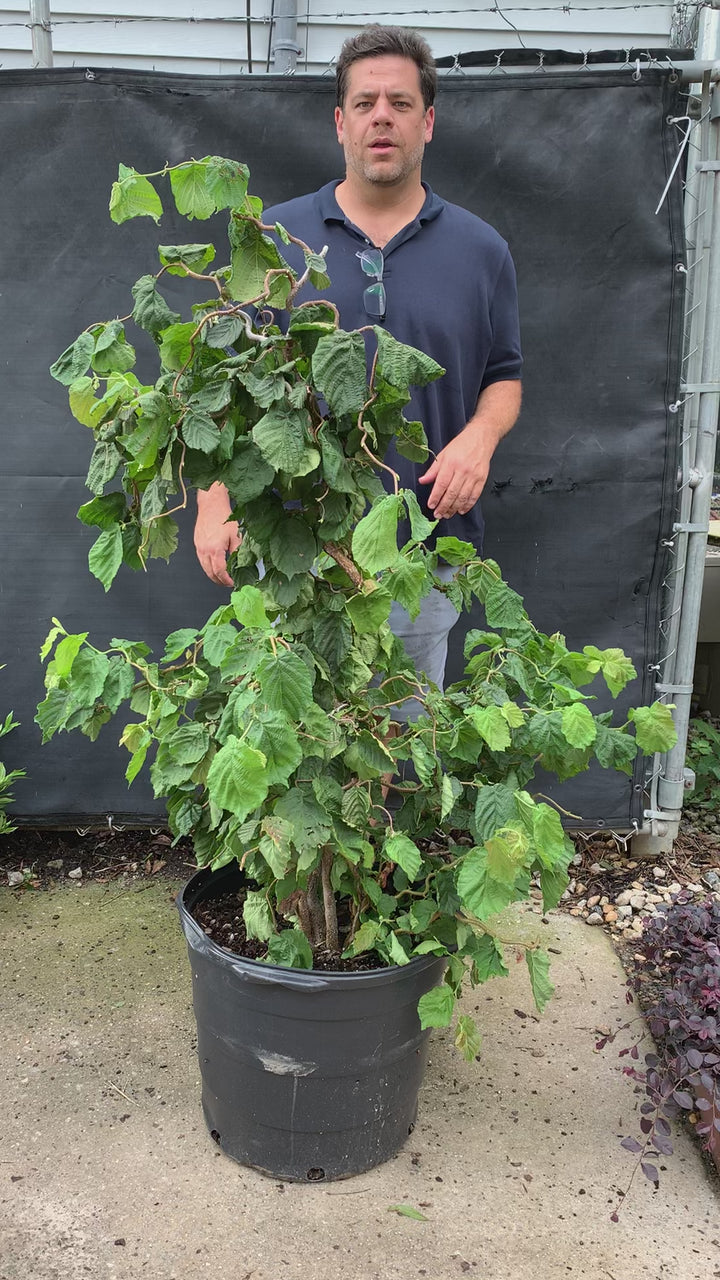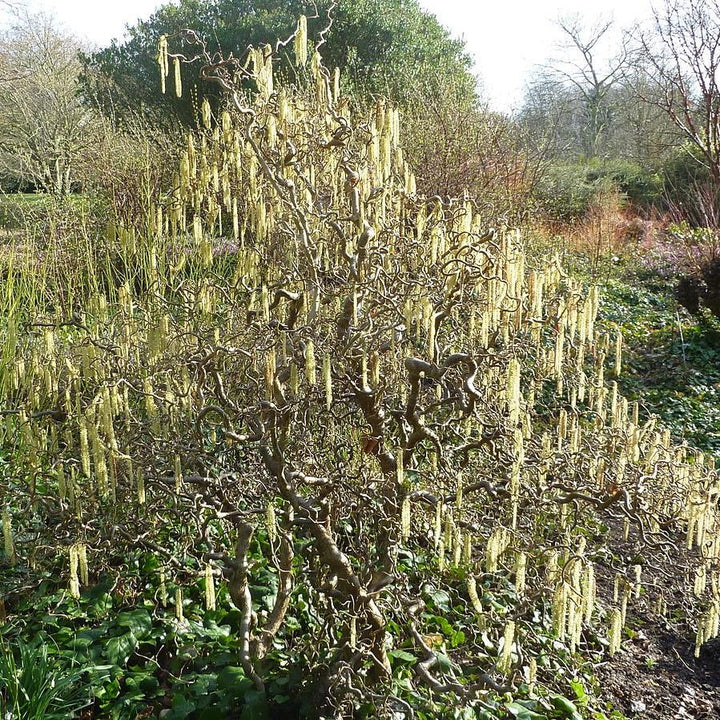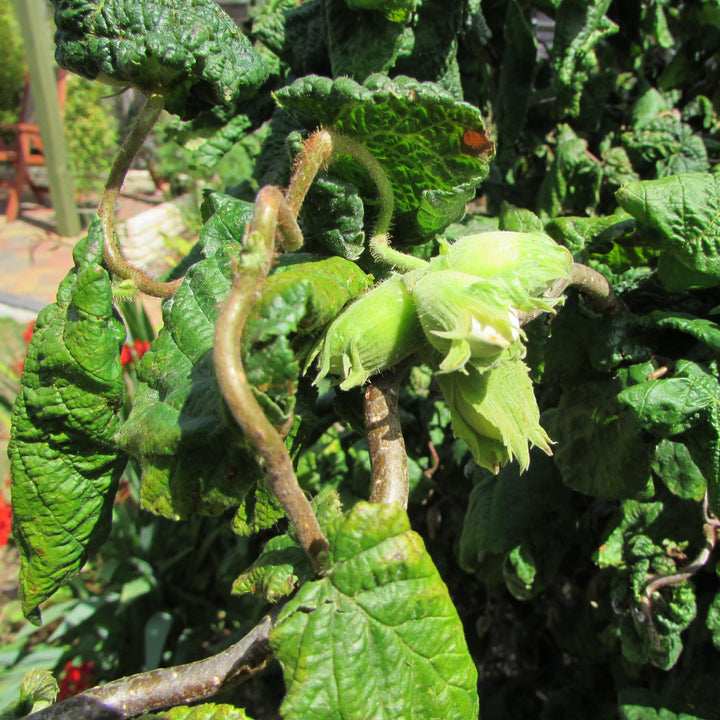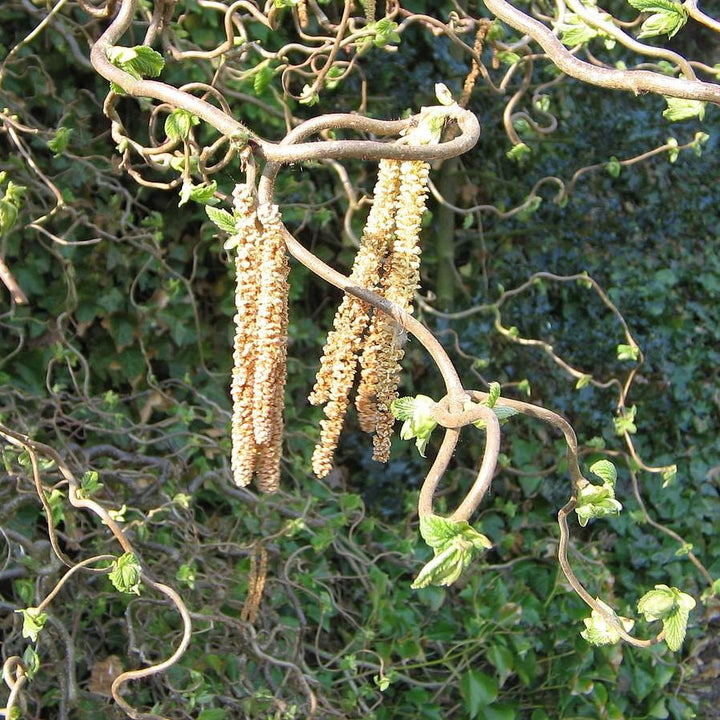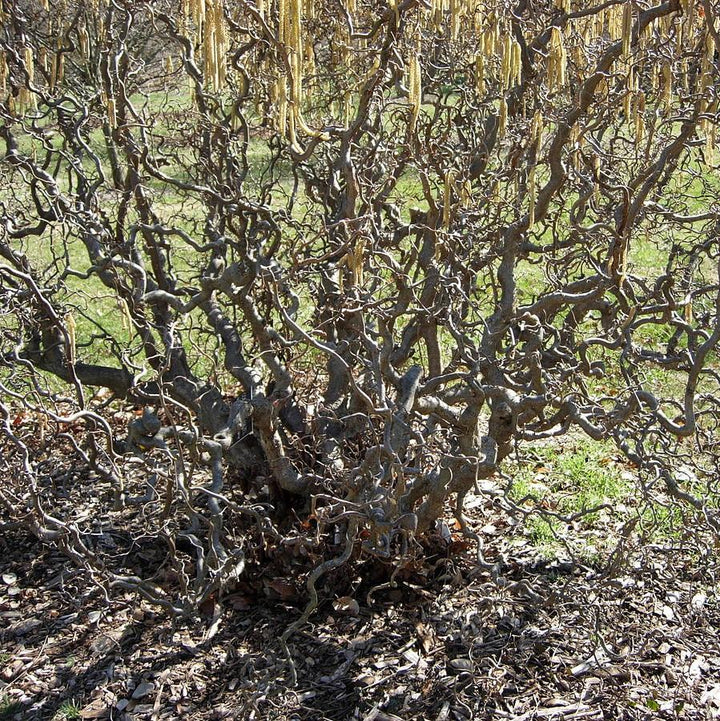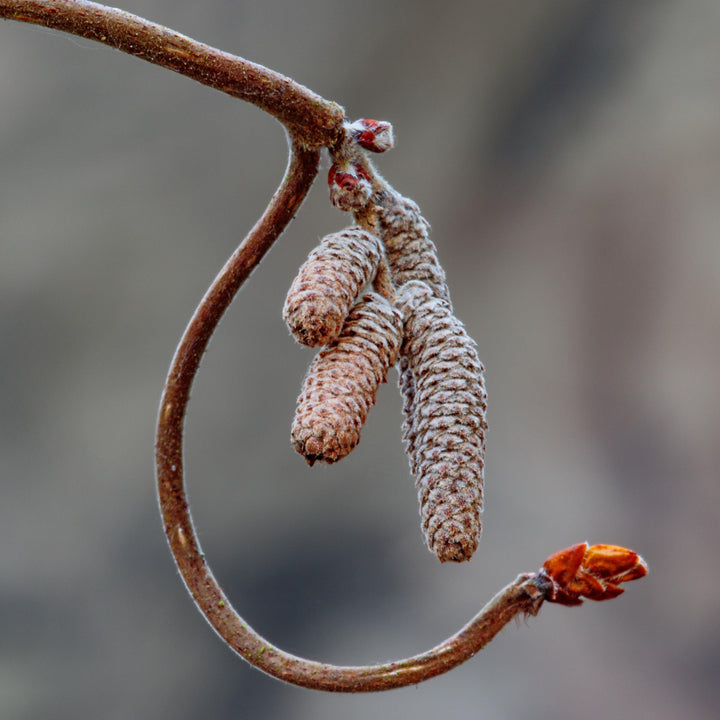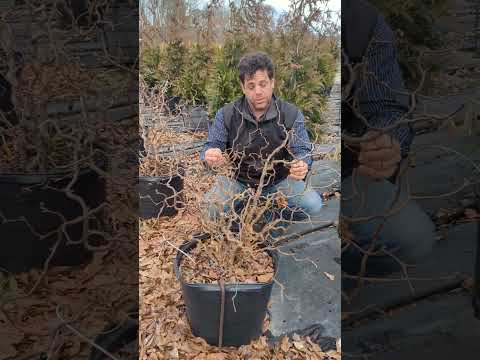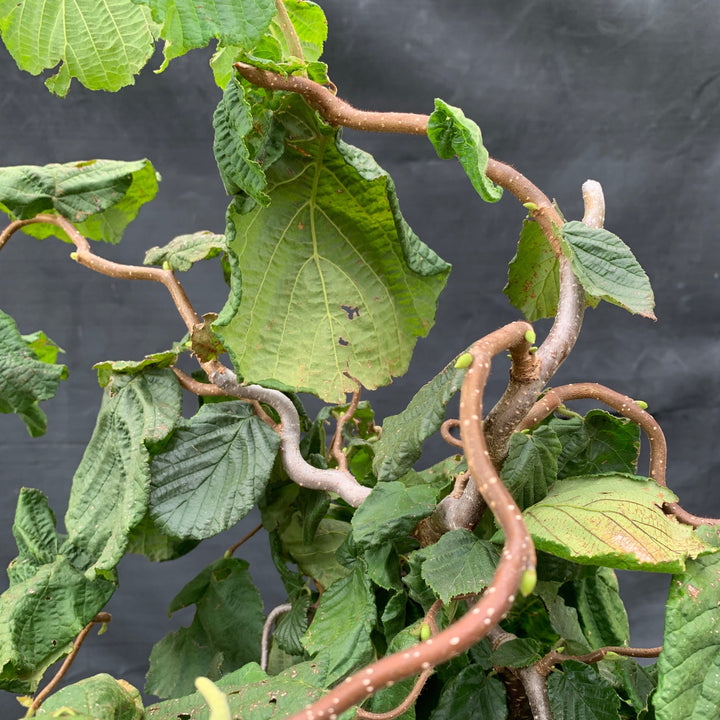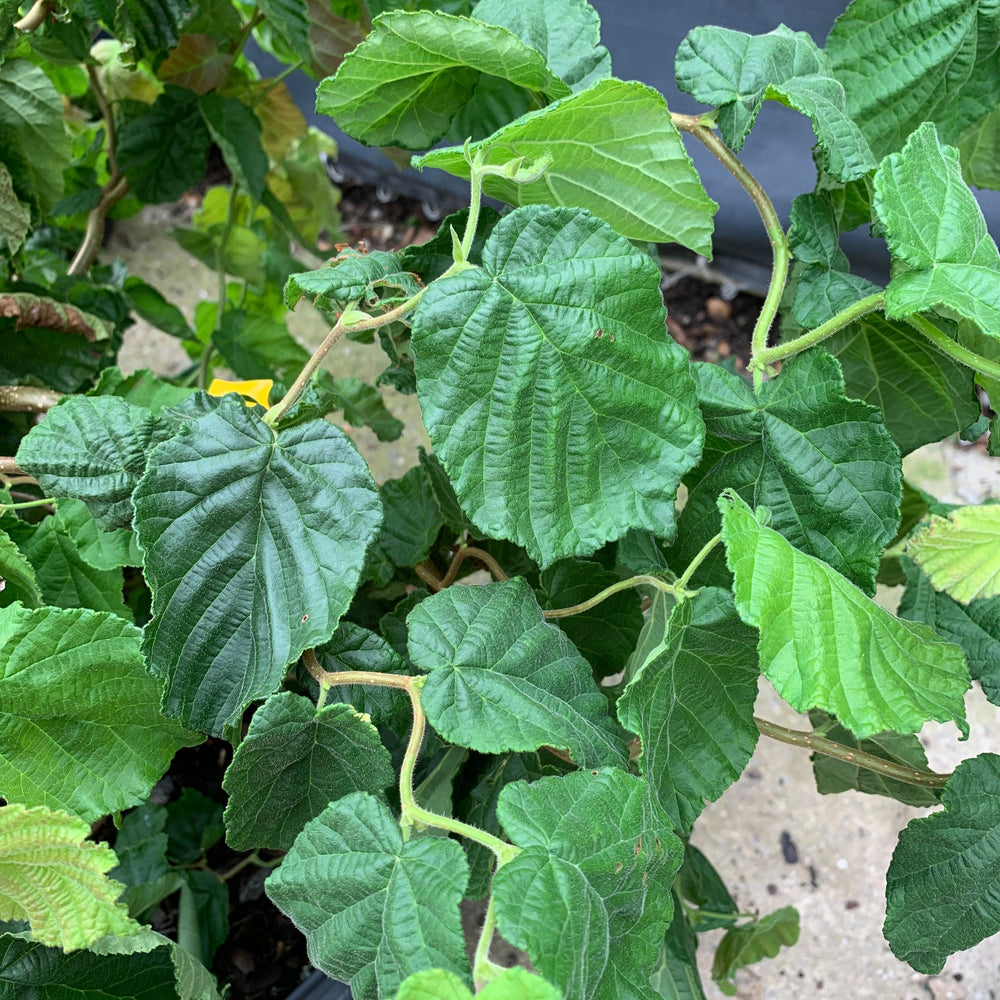Contorted Filbert is a multi-trunked deciduous shrub with a rounded habit and distinctive corkscrew branches. The small serrated green leaves are also twisted and turn an undistinguished yellow in fall. The showy pale yellow male flowers bloom on catkins in late winter into spring before the leaves come in. Grows best in rich, moist, well-drained soils. Contorted Filbert does not produce nuts and has good resistance to filbert blight.
|
Type: |
|
|
Height: |
8’ - 10’ |
|
Spread: |
8’ - 10’ |
|
Spacing: |
8’ |
|
USDA Hardiness Zone: |
4 - 8 |
|
Culture: |
|
|
Bloom Color: |
Yellow |
|
Season of Interest: |
MAINTENANCE NEEDS: Low Maintenance. Most Contorted Filbert sold commercially are grafted and must remove the suckers regularly to prevent partial reversion to the non-contorted characteristics of the root stock. Occasional issues include black knot, crown gall, apple mosaic virus, and leaf spot. Japanese Beetles can be a serious pest in some areas.
LANDSCAPE USES: Accents or Group Plantings, Borders, Woodland Gardens, Naturalized Areas, Wildlife Gardens, Foundation Plantings, Hedges and Containers..
COMPANION PLANTS: Viburnum, Forsythia, Hydrangea
IMAGES: Magnus Manske, Corylus avellana 'Contorta' (Corylaceae) plant, CC BY-SA 3.0, (2) Meneerke bloem, Corylus avellana Contorta male catkins, CC BY-SA 3.0, (3) Richard Avery, Corylus avellana Contorta 04, CC BY-SA 4.0, (4) Malcolm Gin, Corylaceae - Corylus Avellana 'Contorta' - Corkscrew Hazel - Europe & West Asia - Branches Closeup, CC BY-SA 3.0, (5) Andy Morffew, Corylus avellana contorta (corkscrew hazel)
*As plants have ranges in appearance they may not appear as the images shown.

